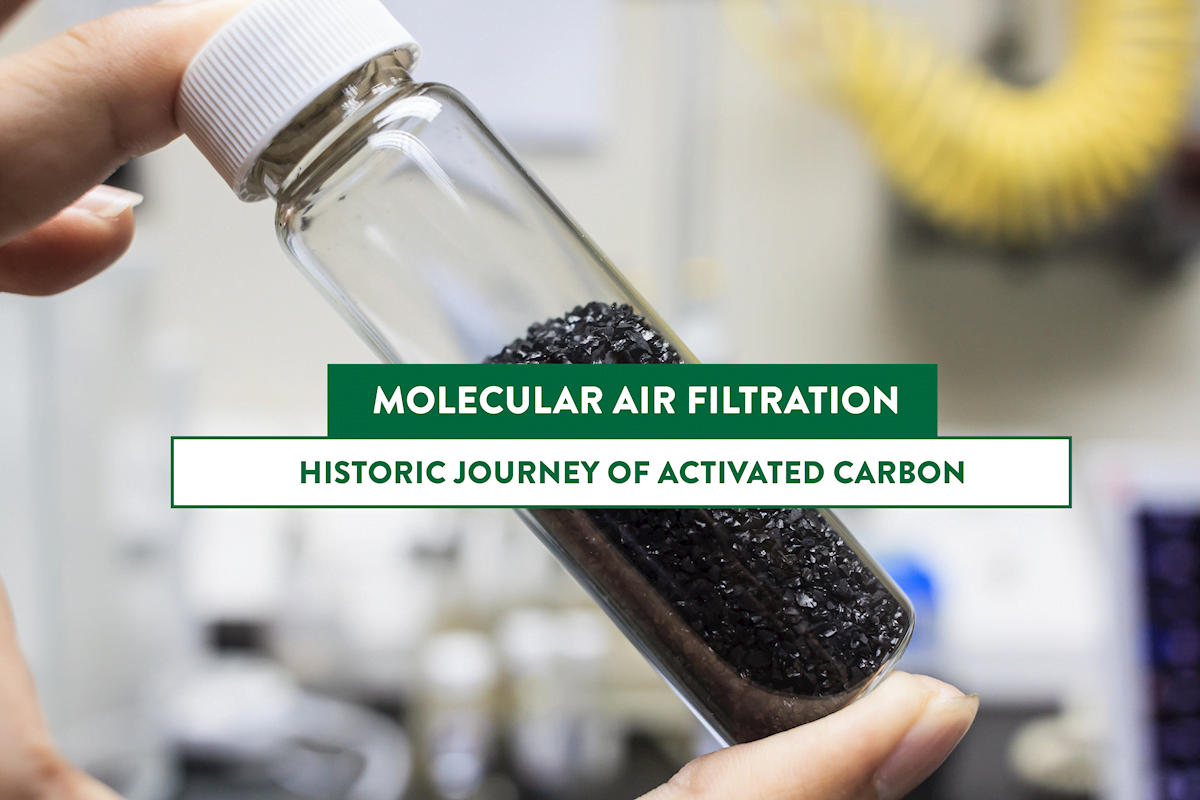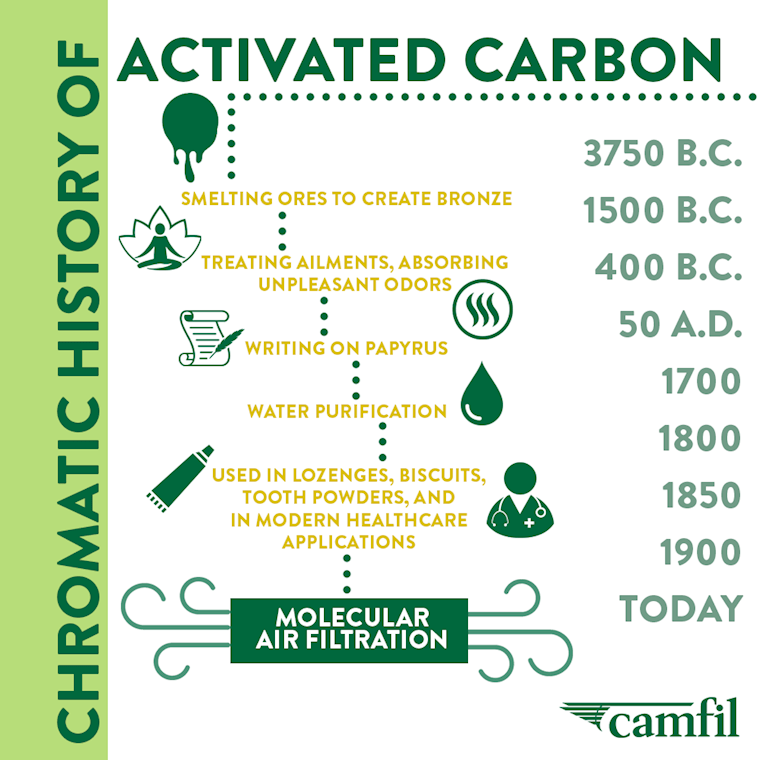
In the mid-1800s, carbon had become ubiquitous as a treatment for many medical conditions. And, in 1857, an army surgeon called James Bird noted: “Carbon mixed with breadcrumbs or yeast has long been a favorite material for forming poultices among army and navy surgeons.”
“The carbon poultice has also obtained a high character in hospital practice as an application to sloughing ulcers and gangrenous sores and recently this substance has afforded immense relief in numerous cases of open cancer by soothing pain, correcting foetor (odors associated with disease) and facilitating the separation of the morbid structure from the surrounding parts.”
In World War I, gas masks used carbon to filter out some of the deadly gases used against the troops but the production and use of activated carbon caught on only after World War II, eventually leading to the development of modern activated carbon air and water filters. By the end of the 20th century, activated carbon was used in a variety of applications in every modern healthcare setting, including for wound dressings, in kidney dialysis units, to treat drug overdoses and the cure of anemia in cancer patients.

What is activated carbon?
Activated carbon is carbon that has been treated with carbon dioxide or super-heated steam at very high temperatures. This creates a matrix of tiny pores in the carbon that increases its surface area and creates more places for molecules to become trapped; this is what makes the carbon an effective filter medium. Activated carbon filters also often undergo chemical treatment to boost their ability to trap specific pollutants.
Activated filters are used particularly in molecular filters (sometimes known as chemical filters or gas phase filters). These typically employ a technique called ‘adsorption.’ In simple terms, this means sticking the molecules onto materials with extremely high surface areas. Nearly all Camfil molecular filters use activated carbon or activated alumina as the active ingredient.
The structure of activated carbon includes millions of microscopic pores where gases enter and condense to a liquid on the carbon surface. One pound of carbon has over six million square feet of surface area allowing the carbon to maintain its gas capture efficiency for a long period, up to four years in some HVAC applications.
Activated carbon filters from Camfil
Camfil uses activated carbon in our molecular filters, designed to remove molecules, gases and vapors from the air. Molecules are typically 1,000 to 10,000 times smaller than the most penetrating particles that pass through HEPA/ULPA filters.
Nearly all Camfil molecular filters use activated carbon or activated alumina as the active ingredient.
For more information about our range of molecular filters, click here.
Watch the video: How Camfil can separate particulates and molecular pollutants along with providing solutions to various applications.